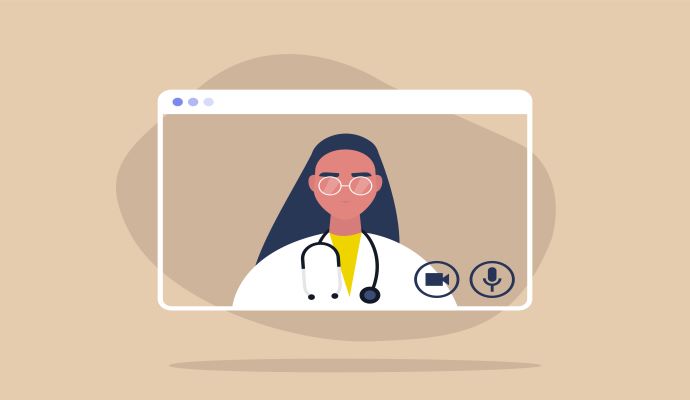Black Cancer Patients Will Accept Telehealth but Prefer In-Person Care
Though Black cancer patients view telehealth as acceptable and convenient, research reveals they have a clear preference for in-person care.

Source: Getty Images
- Black cancer patients prefer in-person care, partly due to a perceived lack of interpersonal connectedness, according to recent research.
Virtual care uptake has been low among Black populations, with prior research showing that Black and Hispanic people were much less likely to participate in a visit conducted through telehealth compared to White people during the COVID-19 pandemic.
This discrepancy in telehealth use led researchers from Henry Ford Health, the University of North Carolina (UNC) Eshelman School of Pharmacy, UNC Lineberger Comprehensive Cancer Center, and UNC School of Medicine to examine the perceptions of virtual care usability and acceptability among Black cancer patients during the pandemic.
Published last month in The Oncologist, the study is based on interviews with self-identified Black patients diagnosed with prostate, multiple myeloma, or head and neck cancer between June 1, 2019, and March 31, 2021. Researchers gathered patient data from EHRs at two academic medical centers and their community affiliates.
Three interviewers with backgrounds in public health, social work, and human biology conducted interviews with 49 adults between September 2, 2021, and May 13, 2022. The researchers also established a patient and family advisory board (PFAB) comprised of Black adults impacted by cancer to ensure community engagement throughout the research process.
Of the 49 adults interviewed, 29 reported having participated in a virtual visit, with ten participating in both video and telephone virtual visits, 11 in telephone-only visits, and eight in video-only visits.
When asked to describe positive virtual visit experiences, participants focused on relational communication, describing their providers as “attentive and accessible, compassionate, caring, and nice, while also being clear about what to expect,” according to the study.
On the other hand, when asked about negative experiences, participants focused on “physical discomfort associated with cancer care, such as treatment side effects and symptoms, and inattentive, disrespectful, and inaccessible communication,” the study stated.
The researchers also identified three overarching themes pertaining to virtual visits.
First, Black cancer patients viewed virtual visits as acceptable and a comfortable and convenient alternative to in-person office visits. Second, they perceived telephone-only visits as critical to overcoming the technology-related challenges related to virtual care. And third, Black adults preferred in-person visits even though they perceived virtual visits as acceptable.
“…Black adults reported that VVs [virtual visits] were less favorable than in-person visits due to a perceived lack of interpersonal connectivity and, among patients who had not experienced a video visit, trust-related concerns,” the study authors concluded. “Ultimately, participants voiced a clear preference for in-person visits as their primary modality for receiving oncologic care.”
The researchers also emphasized the importance of telephone-based visits as an alternative virtual care option to mitigate technology-related hurdles.
Past studies have highlighted the critical role audio-only telehealth visits play in ensuring health equity.
A study published in 2021 revealed that Black patients were more likely to seek audio-only telehealth services. The study included 148,997 patients who had 266,350 outpatient visits at Michigan Medicine from April 1, 2020, through June 30, 2020. Of these, 44,793 patients (30.1 percent) had only in-person visits, and 104,204 patients (69.9 percent) had at least one telehealth visit.
About 53.6 percent of self-identified Black patients used phone-only visits compared to 37.9 percent of Asian patients. Additionally, Black patients were, on average, 10.2 percent less likely to receive care via a video visit than those who identified as White.
Another study published last year showed that satisfaction with audio-only telehealth was similar to video-based telehealth among older and underserved patients. Researchers gathered data from 200 participants, of which 43 percent were Black.
When asked if they would like a telehealth visit of a similar type in the future, 30.2 percent of the video-based telehealth group and 27.9 percent of the phone-only telehealth group reported yes. Both groups reported similar levels of agreement when asked whether they would recommend telehealth.
